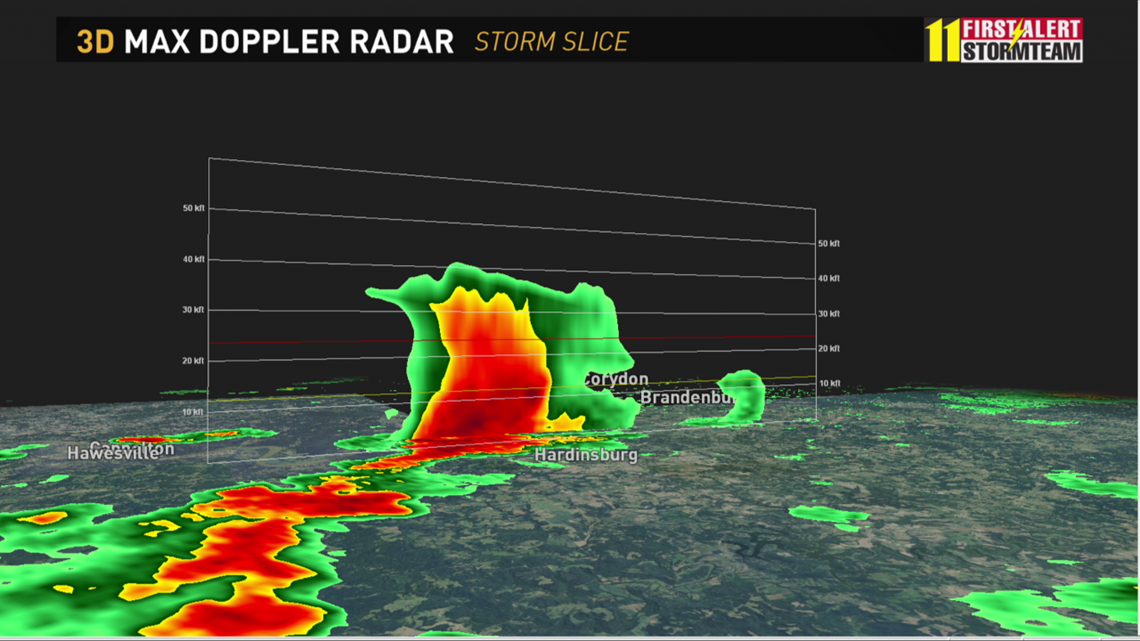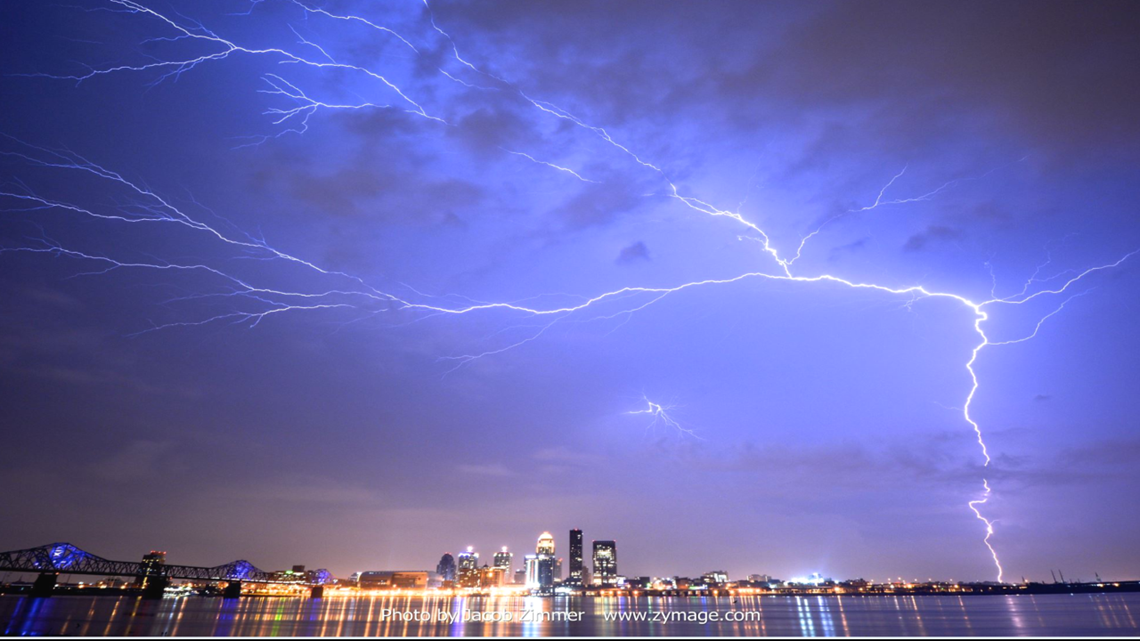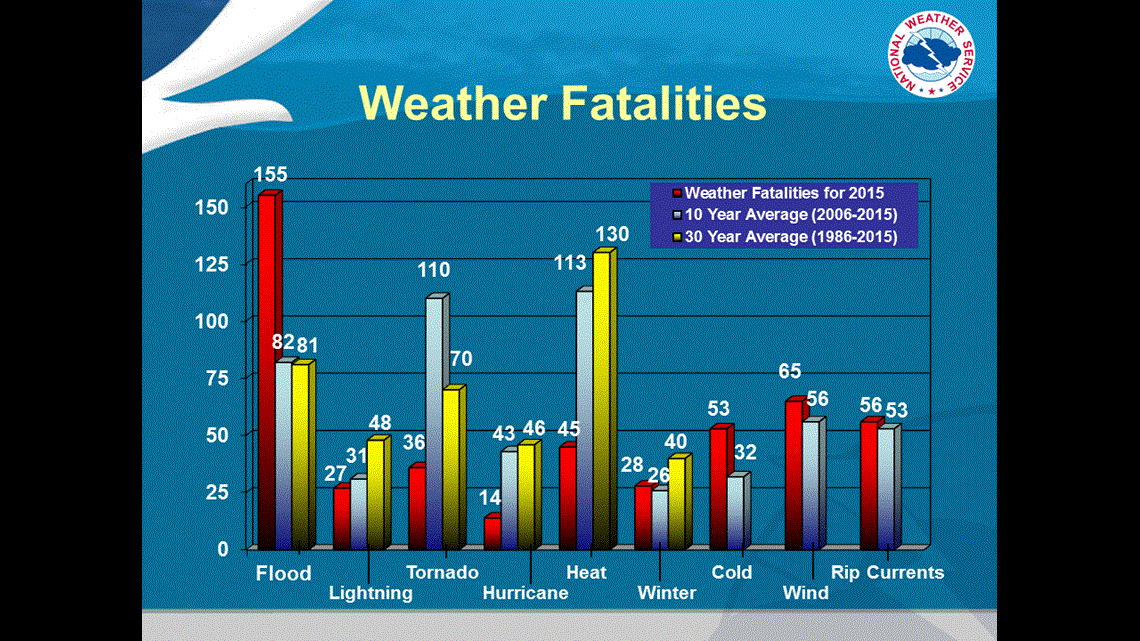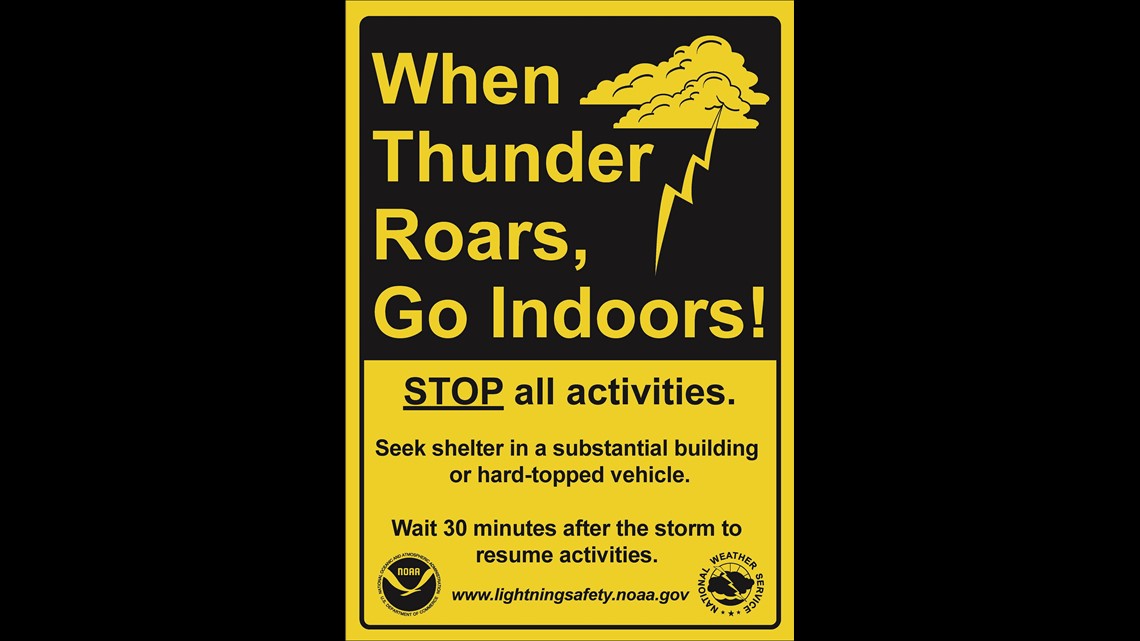Sometimes thunderstorms can produce a significant amount of lightning and thunder. With any rainstorm, lightning can be a safety hazard.


Here's a look at at a storm shown on our Max Doppler Radar. You can see the storm rises up to 40,000 feet in height. Once the storm reaches 25,000 feet there is a good chance for lightning. At this level the particles moving in the clouds become positive or negatively charged as they collide. Heavier particles carry a negative charge towards the ground while lighter particles remain at the top of cloud. When the differences in charges become too great there is a rapid release of electricity which we know to be lightning!


Lightning can occur within a cloud or between the cloud and the ground. Lightning within a cloud appears as a large flash across the sky whereas cloud-to-ground lightning typically appears as a long streak of light stretching from a cloud to the ground.


Lightning is not the leading cause of weather-related deaths in the US, but many people each year are injured because of lightning strikes. Above is a breakdown of how lightning stacks up to other weather-related fatalities.
Kentucky Lightning Stats (U.S. survey 1957-2007)
- Ranked 20th in lightning deaths
- 24th in lightning injuries
- 19th in related lightning damage


The best way to stay safe during lightning is to move indoors if you are outside. If you cannot get indoors, avoid standing near tall metal structures and under trees. Avoid standing in the middle of an open field. Stay away from wet items. They will not attract the lightning, but anything wet is an excellent conductor of electricity.
For more information here are some links from the National Weather Service below:

